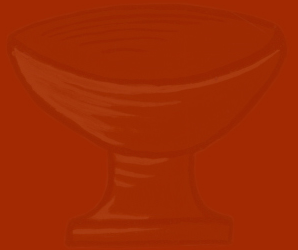
The Trinity Icon
This most famous of icons was written by Andrei Rublev who was born in Russia circa 1360. Many scholars consider Rublev's Trinity the most perfect of all Russian icons and perhaps the most perfect of all the icons ever painted.
Rublev's Trinity icon is considered to be void of any noticeable energy of earthly life, of corporeality of forms and external manifestations of love, equally absent from it is that cold soaring of the spirit, so remote from humans.
The image determines the subtle struck balance between soul and spirit, the corporeal and the imponderable, endless and immortal sojourn in the heavens. When speaking of Rublev's work, different authors describe the Trinity's Angels as quiet, gentle, anxious, sorrowful, and the mood permeating the icon as detached, meditative, contemplative, intimate.
The subject of the icon is based on the Biblical story about the visit by three Angels to the Prophet Abraham and his wife Sarah. According to the theological interpretations whose authors associated the Old Testament events with events of the New Testament, these Angels were the three Persons of the Trinity: God the Father, God the Son and the Holy Spirit. In Rublev's icon we observe for the first time all the three Angels shown equal. This icon alone conformed to the strict rules of the orthodox doctrine of the Trinity.
From the earliest times, the idea of the Trinity was controversial and difficult to understand, especially for the uneducated masses. Even though Christianity replaced the pagan polytheism, it gave the believers a monotheistic religion with a difficult concept of one God in three hypostases -- God the Father, God the Son, and God the Holy Spirit. Trying to portray the Trinity, but always aware of the Biblical prohibition against depicting God, icon painters turned to the story of the hospitality of Abraham who was visited by three wanderers.
Very few artists before Rublev dared to eliminate all the narrative elements from the story of the hospitality of Abraham, leaving only the three angels. Rublev was the first to make a conscious decision not to include in his composition the figures of Abraham and Sarah because he did not set out to illustrate the story of the hospitality of Abraham, as did many painters before him, but to convey through his image the idea of the unity and indivisibility of the three persons of the Trinity.
This icon is based on the prototype of Rublev.




